Generation Z consists of those born after 1997. The eldest members of this cohort are in their early 20s, graduating college and about to enter the workforce. This generation differs greatly from all previous cohorts in saving, spending and overall money management habits.
Here are a few key characteristics of this generation:
- Their ability to find answers quickly by accessing information online enables them to make informed decisions and become smart shoppers.
- Many have called this generation the most financially savvy because of their keenness on saving and their entrepreneurial spirits.
- This sense of independence and self-reliance is partially because of the digital world they grew up in.
Read on to learn more about Generation Z’s spending habits and their other financial patterns.
How Generation Z Shops Online and Offline
Generation Z is known as the first digitally native generation and does not differentiate between online and offline channels. They expect the same quality and speed of an online channel to translate to stores. They’re also much savvier with online shopping channels than their predecessors and are not easily swayed by gimmicks or celebrity influencers. Take a look at how Gen Z shops.
Online Shopping Habits
Since this generation never knew a world without the internet, they have high expectations for online channels and low tolerance for any slowdowns or glitches. Members of this cohort are also used to quick service since 87 percent of Gen Z have high-speed internet at home.
They’re also skeptical about giving away their information since they’ve grown up in an age of high-profile data breaches for major brands. Read through our stats below to learn how Gen Z behaves online:
- 74 percent of Gen Z spends most of their free time online. (Source: IBM)
- 75 percent of Gen Z consumers use mobile phones and smartphones the most compared to other devices. (Source: IBM)
- 60 percent of Gen Z won’t use an app or website that loads slowly. (Source: IBM)
- Consumers in Gen Z 60 percent more likely than the average consumer to hang up if the phone isn’t answered in 45 seconds. (Source: Marchex)
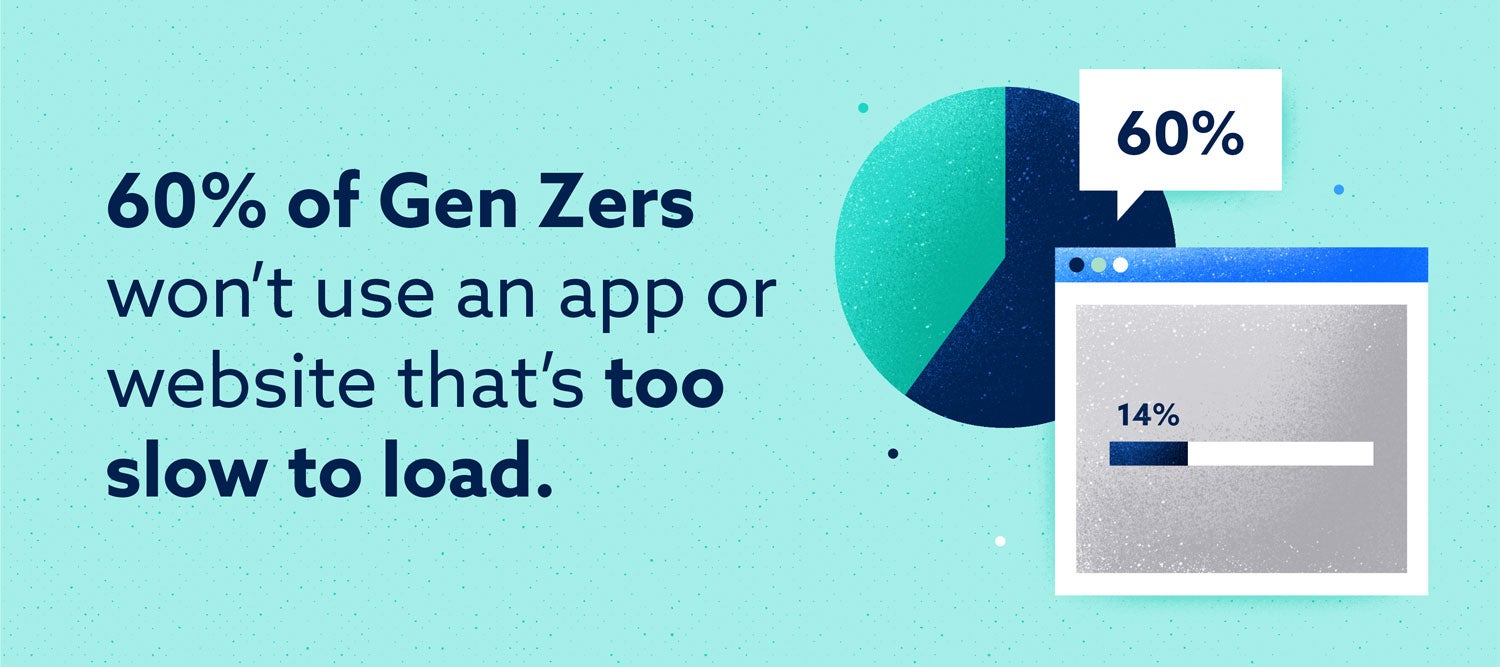
- Less than one third of Gen Z is comfortable sharing personal details other than contact information and purchase history. (Source: IBM)
- Only 18 percent of Gen Z is comfortable sharing payment information with their favorite brands. (Source: IBM)
- 20 percent of Gen Z is willing to share public reviews online for things like restaurants and products. (Source: IBM)
- 25 percent of Gen Z consumers spend more than five hours a day on their mobile phones. (Source: IBM)
Brick-and-Mortar Shopping Habits
Contrary to what you might think, the majority of Gen Z prefers to make purchases in store. One reason could be that they lack access to credit cards to make online purchases (although they do use debit cards). We may see this preference change over time.
However, it’s important to note that members of Generation Z are not blinded by technological “bells and whistles” with any shopping channel. Their priorities lie in the basic retail experience: product availability, quality products and efficient service. They may be swayed as long as any addition enhances the shopping experience. Read on to see what expectations Gen Z has for their brick-and-mortar shopping trips:
- More than 98 percent of Gen Z prefers to make purchases in brick-and-mortar stores. (Source: IBM)
- 66 percent of Gen Z consumers want very few products to ever be out of stock. (Source: IBM)
- 65 percent of Gen Z consumers want to get real value for their money through things like discounts and rewards programs. (Source: IBM)
- 56 percent of Gen Z shoppers want the store experience to be fun so they won’t get bored. (Source: IBM)
- 48 percent of Gen Z consumers expect to be able to exchange or return items bought online in the store. (Source: Adyen)
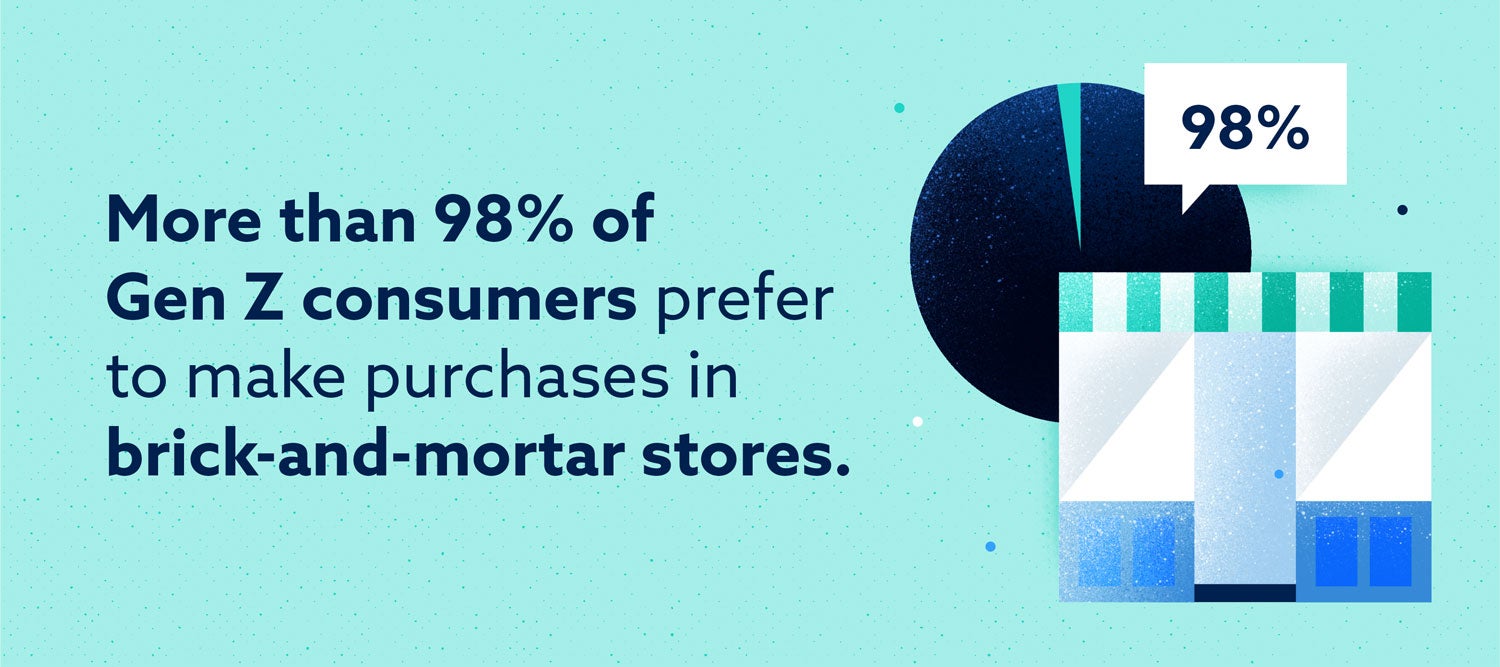
- 66 percent of Gen Z consumers say they would visit a store more if they could check item availability beforehand. (Source: Adyen)
- 33 percent of Gen Z shoppers expect to be able to buy online and pick up in-store. (Source: Adyen)
- 39 percent Gen Z shoppers hope that “just walk out” stores will universally be the norm in the next 12 months. These types of stores allow shoppers to pick up the items they need and allow the store automatically charge them without needing to interact with a cashier or check out. (Source: Adyen)
- About one in three Gen Z consumers want showrooms to be a part of the shopping experience in the next 12 months. “Showrooming” provides shoppers a physical place to examine products before buying them online. (Source: Adyen)
- 44 percent of Gen Z shoppers want brands to use augmented reality or virtual reality to enhance the shopping experience in the next 12 months. (Source: Adyen)
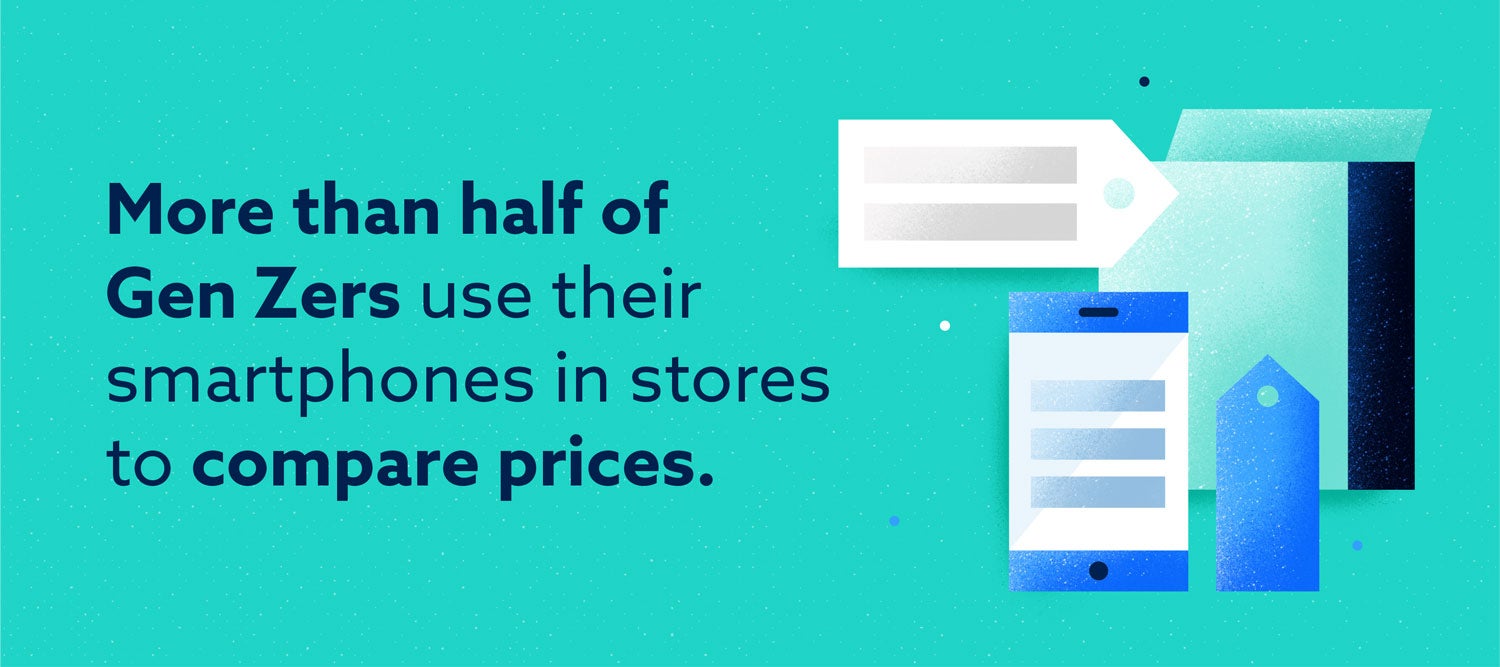
- 53 percent of Gen Z consumers use their smartphones in stores to look at items that aren’t available in the store to see if there is anything else they’d prefer to buy. (Source: NRF)
- 51 percent of Gen Z shoppers say that the ease of switching between channels is the most important for them when shopping. (Source: NRF)
- 52 percent of Gen Z shoppers use their smartphones in stores to look up products at other stores for price comparisons. (Source: NRF)
- Gen Z consumers had 14.6 billion restaurant visits in 2018. (Source: The NPD Group)
- Gen Z makes up 25 percent of total foodservice traffic. (Source: The NPD Group)
How Gen Z Views Brands
Members of Generation Z expect brands to be transparent, ethical and responsible in all aspects of their business. Neglecting to do so can result in a lost opportunity to collect information or lost business altogether from this generation.
Product value is much more important to Gen Z than brand loyalty, so brands need to work extra hard to keep Gen Z’s business around. Take a look at different brand preferences Gen Z has and what they expect from today’s brands:
- 46 percent of Gen Z say their friends’ recommendations and opinions matter to them when choosing a brand. (Source: IBM)
- 66 percent of Gen Z shoppers want brands to sell high-quality products. (Source: IBM)
- 45 percent of Gen Z consumers choose brands that are eco-friendly and socially responsible. (Source: IBM)
- 61 percent of Gen Z prefers brands that offer secure data storage and protection. (Source: IBM)
- 43 percent of Gen Z shoppers prefer brands that provide clear terms and conditions in how they will use their information. (Source: IBM)
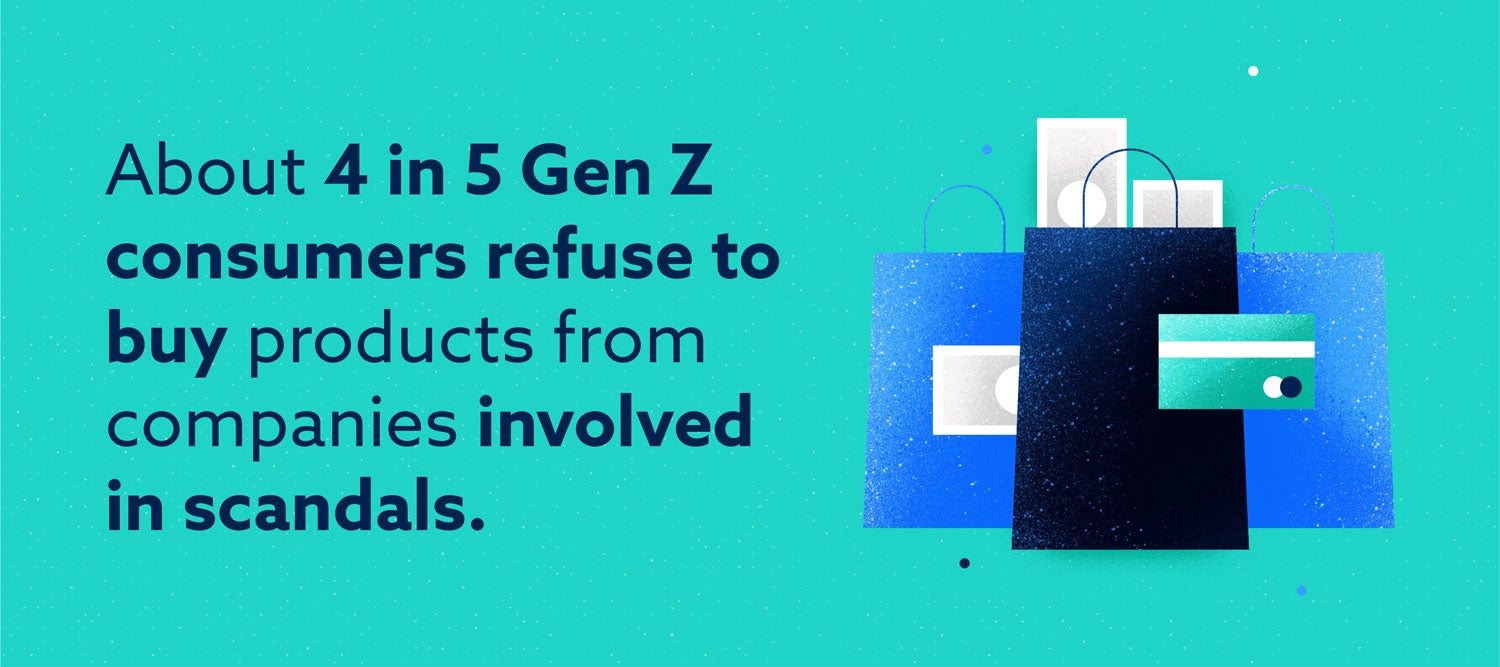
- When asked to define what brand loyalty means, 38 percent of Gen Z shoppers said it means they “sometimes buy the brand, but…would consider other alternatives that offer a lower price.” (Source: CrowdTwist)
- 41 percent of Gen Z consumers have been influenced by Facebook ads. (Source: Adyen)
- 60 percent of Gen Z consumers believe it’s important for brands to value their opinion. (Source: Adyen)
- When giving feedback, Gen Z shoppers are twice as likely to give positive feedback than negative feedback. (Source: Adyen)
- About 65 percent of Gen Z consumers try to learn the origins of the things they buy including where it’s made and what it’s made from. (Source: Mckinsey)
- About 80 percent of Gen Z refuses to buy products from companies involved in scandals. (Source: Mckinsey)
Financial Habits
Despite their young age, Generation Z holds $44 billion in buying power alone. In addition to their own dollars, they also exercise a lot of influence over their households. Their digital savviness comes into play once again in this area. Their expertise enables them to guide their families through different purchase phases including product evaluation and the purchase itself.
Members of Gen Z are also financially savvy and keen on earning money, even at their young age. Entrepreneurialism is a key attribute of this generation and we’ll likely see them owning their own businesses and thriving in the gig economy instead of working traditional 9-to-5 jobs.
- 22 percent of Gen Z makes money online. (Source: IBM)
- 59 percent of Gen Z receives an allowance. (Source: IBM)
- 24 percent of Gen Z works part-time jobs. (Source: IBM)
- 16 percent of Gen Z works for themselves. (Source: IBM)
- Gen Z’s spending power is $44 billion. (Source: National Retail Foundation)
- 14 percent of Gen Z prefers to pay via credit card. (Source: CrowdTwist)
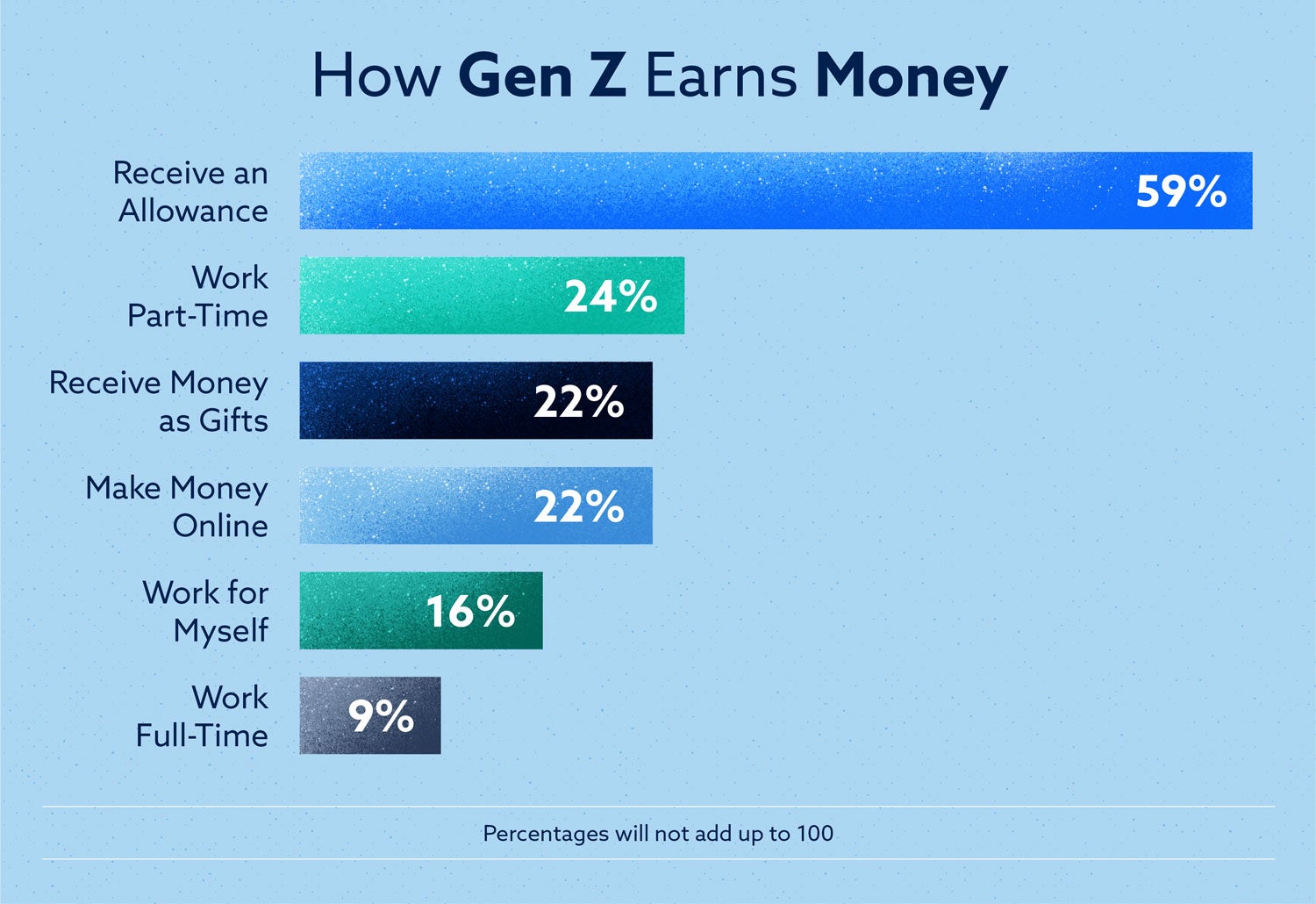
- 58 percent of Gen Z consumers prefer to pay via debit card. (Source: CrowdTwist)
- 29 percent of Gen Z spends most of their free time trying to earn extra money. (Source: IBM)
- More than 70 percent of Gen Z consumers believe they influence family decisions on buying furniture, household goods and food and beverages. (Source: IBM)
- 60 percent of Gen Z believe they influence their families’ clothes and shoes spending. (Source: IBM)
- 77 percent of Gen Z consumers believe they influence family spending on food and beverages. (Source: IBM)
- 75 percent of Gen Z spends more than half of their monthly income. (Source: IBM)
Gen Z vs. Millennials
Millennials have been center stage for many years. As that generation begins to age out, Generation Z is beginning to capture the world’s attention with their different spending, saving and earning habits. Millenial spending habits differ quite a bit from their Gen Z counterparts. This is partially because Gen Z is very price conscious and focuses on overall value when making buying decisions. We can see these differences when comparing preferences and priorities with different products and services.
- Millennials are 50 percent more likely to consider brand alternatives that offer more compelling brand promises than Gen Z. (Source: CrowdTwist)
- Gen Z is 50 percent more likely to say the presence of a loyalty program is a driver of brand loyalty than millennials. (Source: CrowdTwist)
- 43 percent of Gen Z teens place importance on car safety features when making a purchase in comparison to 25 percent of millennials. (Source:Kelly Blue Book)
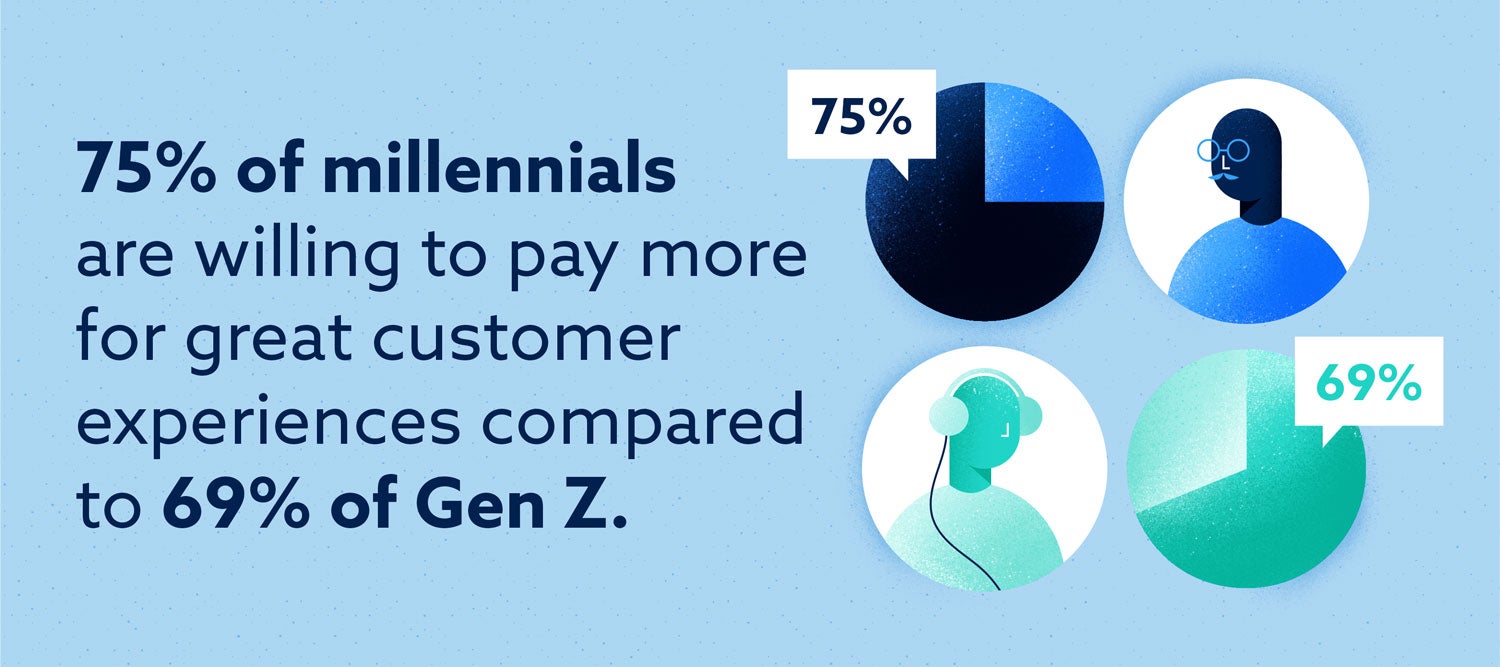
- 34 percent of millennials place importance on a car’s brand when making a purchase in comparison to 23 percent of Gen Z.
- (Source:Kelly Blue Book)
- 75 percent of millennials are willing to pay more for great customer experiences compared to only 69 percent of Gen Z. (Source:Salesforce)
- Only 63 percent of Gen Z trusts companies in comparison to 71 percent of millennials. (Source:Salesforce)
The 2.6 billion members of this generation are a group to watch as they grow up and enter the workforce. Their financial management looks to be off to a strong start thanks to their frugal mindsets and entrepreneurial attitudes. They’ve proven so far that they’re ready to responsibly make and manage their money to avoid the financial issues they’ve grown up with.
Teens and young adults should not only make plans to keep down debt, but also learn how to build and manage their credit. This includes applying for credit cards, keeping payments down and checking your credit report often to make sure everything is accurate. If you do find any inaccuracies on your credit report like an account you don’t recognize, you can call to learn about how Mckenzieadams.net credit repair services can help clean up your credit report.
***Call us NOW at (888) 810-2897 or visit mckenzieadams.net to learn how to Protect and Improve your credit RIGHT AWAY***

